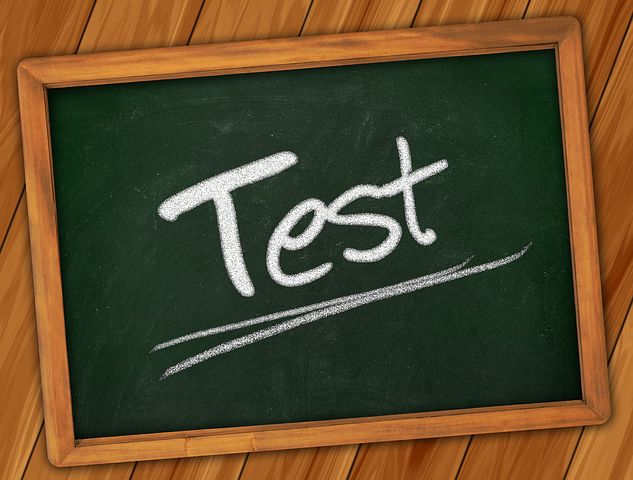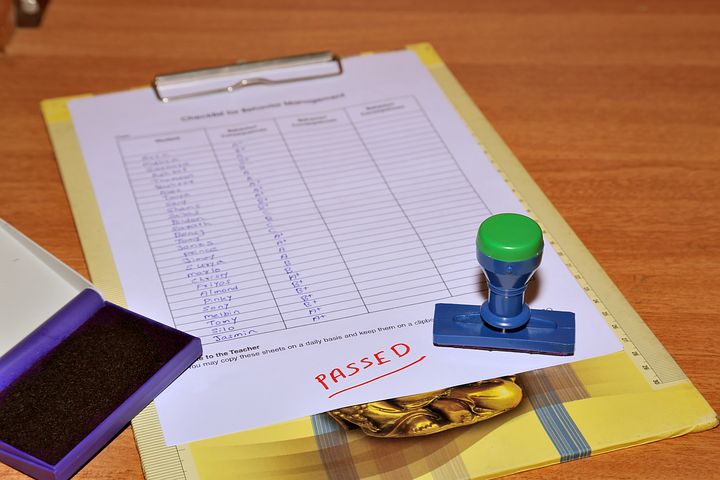
Are you planning on applying to business school? Are you wondering which MBA entrance exam you should take to increase your chances of admission to the programs you’re applying to?
In this article, I’ll discuss the most common MBA entrance exams that business schools require applicants to take. First, I’ll discuss why schools care about MBA entrance exam results. Next, I’ll discuss the main MBA entrance exams, which schools require them, and the basic content and format of each. Finally, I’ll help you decide which entrance exam you should take if you’re applying to business school.
Why Do Admissions Committees Care About MBA Entrance Exams?
As an applicant, you may be wondering why admissions committees care about your scores on an MBA entrance exam. After all, admissions committees review lots of data about your academics, extracurricular activities, prior professional experience, and other qualifications. So why is there so much emphasis placed on MBA entrance exam scores?
Your MBA entrance exam score helps admissions committees easily compare you to all their other applicants, since you all took the same (or a similar) test. It can be difficult for admissions committees to compare grades in prior undergraduate coursework, because different undergraduate institutions have different ways of grading students, different curricula, and different levels of rigor in their testing and grading. Standardized tests, like MBA entrance exams, have the same questions and performance assessments for all test-takers.
While there are many different MBA entrance exams out there, they’re all intended to measure your analytical, quantitative, verbal, reading, and writing skills. In short, an entrance exam for MBA programs assesses your readiness to complete the rigorous coursework you’ll encounter as a student.
Not sure how or what to study? Confused by how to improve your score in the shortest time possible? We've created the only Online GMAT Prep Program that identifies your strengths and weaknesses, customizes a study plan, coaches you through lessons and quizzes, and adapts your study plan as you improve.
We believe PrepScholar GMAT is the best GMAT prep program available, especially if you find it hard to organize your study schedule and don't want to spend a ton of money on the other companies' one-size-fits-all study plans.

The 5 Most Common MBA Entrance Exams
In this section, I’ll cover the basic content and format of the most common MBA entrance exams.
GMAT
The GMAT is the most common MBA entrance exam in the world. Last year, a total of 247,432 people across the world took the GMAT. Like other MBA entrance exams, the GMAT is designed to measure your reasoning, quantitative, verbal, and writing skills to see how you measure up to other applicants and predict your success in business school.
The GMAT is a computer-based test with four sections: quantitative, verbal, integrated reasoning, and analytical writing assessment. The quantitative and verbal sections are both adaptive and multiple-choice, meaning the difficulty level of the questions changes as you take the test based on your performance. The GMAT has four different sections: analytical writing assessment, integrated reasoning, quantitative, and verbal.
The GMAT is designed specifically for entrance into business school. If you’re applying to a full-time MBA program in the United States, you’ll almost certainly have to take the GMAT, unless the school also accepts GRE scores. Some schools in Europe and Asia also require GMAT scores for business school applicants.

GRE
Increasingly, more and more business schools are accepting GRE score for the MBA entrance exam requirement. Typically, the GRE is taken by anyone who plans to attend grad school, which includes students applying for master’s degrees, PhDs, MBAs, and more. Unlike the GMAT, the GRE isn’t specifically designed for MBA admissions, but it tests many of the same skills. The GRE has three sections: analytical writing, verbal reasoning, and quantitative reasoning.
Students who struggle with the quantitative section of the GMAT and/or consider themselves stronger verbal test-takers may want to consider taking the GRE instead. Like the GMAT, GRE scores are mainly accepted at business schools in the United States.
Executive Assessment
The Executive Assessment is a standardized test designed by GMAC, the writers of the GMAT. Like the GMAT, the Executive Assessment is designed specifically for admission into business school. Unlike the GMAT, the Executive Assessment is designed to be taken by test-takers who have years of professional experience under their belt for admission into executive MBA programs.
The Executive Assessment is shorter in format and content covered than either the GMAT or the GRE. There are three sections on the Executive Assessment, each of which take 30 minutes: integrated reasoning, verbal, and quantitative.
The Executive Assessment is accepted by some of the most competitive business schools around the world for admission into executive MBA programs, including Columbia Business School, University of Virginia Darden School of Business, and the University of Hong Kong Business School.
Common Admission Test
The Common Admission Test is the most popular entrance exam for MBA students applying to school in India. The CAT is used for admission at 19 Indian Institutes of Management (IIMs), as well as other management schools offering MBA programs throughout India. Like the GRE and GMAT, the CAT is an online test.
The CAT consists of four content areas which are grouped into three tested sections. The four content areas are verbal, quantitative, data interpretation and logical reasoning. On 2015’s CAT, those content areas were tested in three different sections: quantitative aptitude, data interpretation and logical reasoning, and verbal and reading comprehension. The Common Admission Test consists of 100 questions, which students must answer in 180 minutes. More than 200,000 students take the CAT in India each year.
Common Management Admission Test
The second most common entrance exam for MBA students in India is the Common Management Admission Test, which is taken by over 150,000 students each year. Over 500 MBA programs across India accept CMAT scores for admission. Unlike the CAT, which has a history dating back to 1950, the CMAT is a new MBA entrance exam which debuted in 2012. However, it’s quickly gained popularity among students applying for business school in India.
Like the CAT, the CMAT is a 180-minute computer-based exam. It has four main sections: quantitative technique, logical reasoning, language comprehension, and general awareness.

Other MBA Entrance Exam Options
If you’re applying to business school in India, there are a number of other MBA entrance exam options besides the CAT and the CMAT. Check out the list of other exams below:
- Xavier Aptitude Test: The XAT is a pen and paper test that qualifies students for courses with the Xavier Labour Relations Institute.
- Symbiosis National Aptitude Test: The SNAP is a national-level management entrance examination in India, used for admission to 15 different schools under the Symbiosis International University, as well as select other MBA colleges.
- NMAT by GMAC: The NMAT by GMAC is a computer-based test that’s used for admission to the following schools in India: Narsee Monjee Institute of Management Students, Ansal University, Alliance University, SRM University, VIT University, and ICFAI Business School.
- Management Aptitude Test: The MAT is a popular MBA entrance exam in India. Over 600 Indian management schools accept MAT scores for admission.
- Indian Institute of Foreign Trade Exam: The IIFT is the admissions test used for admission to the Indian Institute of Foreign Trade.
- AIMS Test for Management Admissions: The AIMS is a national-level management test, used at a handful of management programs in India.
- ICFAI Business School Aptitude Test: The IBSAT is used for admissions to MBA programs at nine campuses of ICFAI: Pune, Mumbai, Jaipur, Gurgaon, Dehradun, Bangalore, Ahmedabad, and Hyderabad.
- MICAT: The MICAT is the online entrance test used for MICA’s specific post graduate degree in Management – Communications.
- KIITEE Management Admission Test: KIITEE is a national computer-based exam used for entrance at two MBA programs: the MBA program at the KIIT School of Management and the MBA in Rural Management at the KIIT School of Rural Management.
- Odisha Joint Entrance Examination MBA: The OJEE is an MBA entrance test conducted by the government of the state of Orissa. Scores from the OJEE are used to gain admission to MBA courses in Odisha.
- Karnataka Management Aptitude Test: The KMAT is another state-level test, used for entrance to MBA programs and business schools in the state of Karnataka.
- Andhra Pradesh Integrated Common Entrance Test: Another state-level test, the APICET is used for admission to business schools and MBA programs in the state of Andhra Pradesh.
Which Entrance Exam for MBA Programs Should I Take?
In short, you should take the MBA entrance exam that’ll help you get into the business schools you’re applying to. To that end, consider the following factors.
First, you need to make sure that you’re taking whatever MBA entrance exams are required at the business schools you’re applying to. So, if the school you’re applying to requires the GMAT, you should take the GMAT. If the school requires the CAT, you should take the CAT. Do your research to make sure that you’re taking the correct exam.
If the schools you’re applying to accept more than one type of score, consider your strengths and weaknesses as a test-taker. For instance, if the school you’re applying to takes both GRE and GMAT scores, you’ll want to think about which exam better fits your abilities. The GMAT has a notoriously difficult quantitative section, while the GRE quantitative section is less challenging. If verbal is your strong suit, then, you’ll probably want to take the GRE instead of the GMAT. Consider these factors when deciding which test to take.
Want to improve your GMAT score by 60 points?
We have the industry's leading GMAT prep program. Built by Harvard, MIT, Stanford, and Wharton alumni and GMAT 99th percentile scorers, the program learns your strengths and weaknesses and customizes a curriculum so you get the most effective prep possible.


Recap:
There are many different exams used for entrance to MBA and business programs around the world. The GMAT and the GRE are the main exams used for admission to US programs, while the CAT and the CMAT are the most common tests accepted in India.
When applying for business school, it’s important to know which exams you have to take for admission to your selected school. You should also consider your strengths and weaknesses as a test-taker to choose the test that best shows off your skills (if you’ve got the option of choosing between two or more tests).
What’s Next?
Now that you know why taking the GMAT is important, let’s talk more about what’s on the test. As I mentioned in the article, the GMAT is specifically designed to measure preparedness for business school. But what does that mean? Check out our What is the GMAT guide to learn more about the structure and history of the test.
Wondering what makes a good GMAT score? Well, the answer varies depending on your goals. In our guide to what makes a good GMAT score, we’ll walk you through the possible ranges of GMAT scores and tell you how to interpret whether or not your GMAT score is “good.”
Concerned about the other parts of your MBA application? In our guide to what makes a good GPA for business school, we’ll talk about what grades you should have to get into the business school of your dreams. We’ll also offer tips for ways that you can boost your application if you’re worried that your GPA won’t be good enough to get you into the business school of your choice.
 PrepScholar GMAT
PrepScholar GMAT